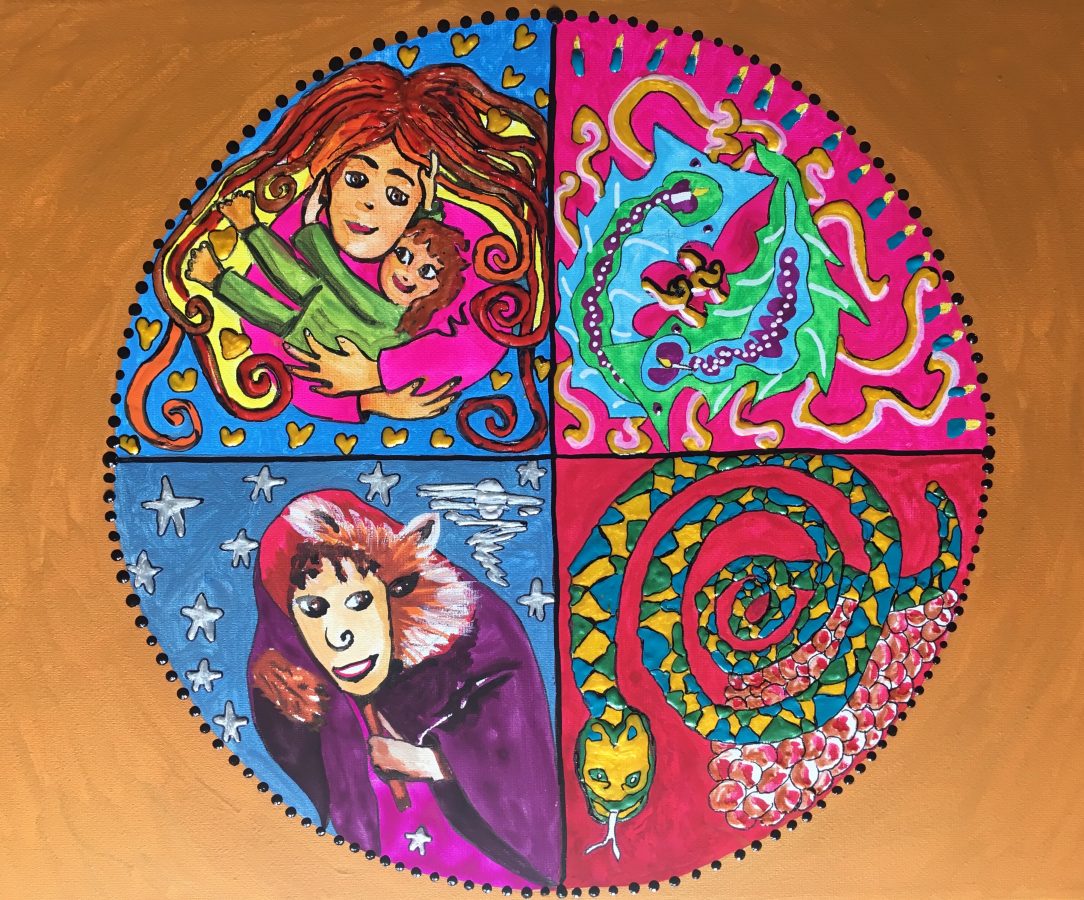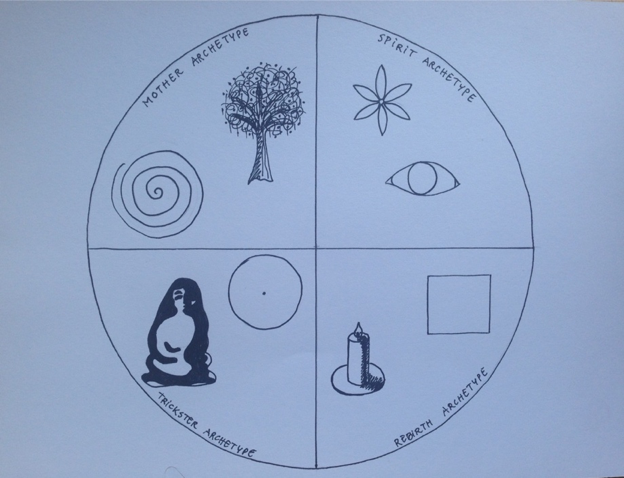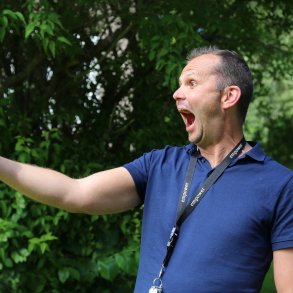By Nina R. Kledal for Enlivening Edge Magazine
Introduction by Jean-Paul Munsch, Guest Editor of EE Magazine’s Education edition:
Integrating strange or difficult parts of their personality helps students become whole again. Nina Kledal shows an example on the base of Jung’s depth psychology of how deepening wholeness works, and how our silence sounds. In her model, she gives the opportunity to strengthen the student, to strengthen the relationship between the teacher and the student, and thus strengthen the ground upon which all learning happens.
How do we aid students in traveling the journey of the hero so that going to school will feel like floating on a river, in sheer bliss on a sunny day, even when paddling upstream?
Toward that end, I have developed a special test to help us understand a student’s preferred ways of learning and thus create ”a shared space safe from judgment, where our deep listening helps others to find their voice and their truth…” (Laloux, 2014)
The “Learning Preference and Life Differences Test” can help schools individualize teaching, and thereby assist students in balancing –and even realizing the gifts and value in–their archetypal energies, during their learning and their life. This ongoing tailoring is a mark of Teal consciousness from the teaching side and amazingly enough, helps students become able to self-manage their own learning in the future partly from seeing the positive sides of themselves. Learning preference is a person’s natural way of understanding and learning, which affects the way they understand the world around them and how they process information.
Individuation, Learning preference
The Learning Preference and Life Difference Test (LPLD) is based on Carl Gustav Jung’s theory about archetypes and the unconscious. Via the test, the patterns of the student’s unconscious are expressed through individually unique combinations of symbols of universal character, forming a unique LPLD profile. The use of this profile in designing teaching strategies and contexts for the student can help open up second-tier awareness in teacher as well as in student. The length of this article does not allow for a detailed description of the symbols nor the archetypes, but the article will focus on how the Learning Preference and Life Differences test can help us understand how children learn, thereby also aiding teachers’ professional development toward Teal teaching approaches.
Archetypes
According to Carl Gustav Jung, archetypes are the structural elements of the collective unconscious. We name them as universals, such as the ones related to this test: Mother, Spirit, the Trickster, and Rebirth. In a well-functioning individual, balance among the person’s archetypes shows up as psychological and behavioral balance and effective learning. According to Jung, like the mythical hero, we all encounter a new set of archetypal energies at each stage of our development and we need to integrate these, both in our personality and our behavior. The task of taking responsibility for such complicated aspects of ourselves, namely our archetypes, is a part of development in childhood and even into adulthood.
Learning preferences
We all have learning preferences. These are formed in the union of our Mother, Spirit, Trickster, and Rebirth Archetype.

Our Mother Archetype is shaped by our primary feminine caregiver. Our mother feeds and cares for us bestowing the mother archetype upon us. This allows us to be able to receive, build relationships, feel grounded, and be a person in the world. Learning preferences related to this archetype might be, for example, that with an imbalanced mother archetype a student might have difficulty sitting still in class or concentrating on an assignment. Difficulty in this archetype can also result in difficulties relating to teachers and classmates.
The Rebirth Archetype is our land of possibility. If the grown-ups, parents, teachers and other caregivers in the child’s life show the child that he or she is loved and accepted, and they create an environment where the child succeeds, the child will always be able to believe difficult things will be possible to complete. The inner sense of groundedness developed in the mother archetype strengthens the Rebirth archetype, in that situations or assignments that seem difficult or impossible, will instead be seen as possible to complete. You will experience a student with strong relational skills, emotionally balanced, and great empathetic skills.
The Spirit Archetype is our higher self, our inner spiritual connection. If we have been allowed to listen to our inner voice, trusting in its guidance and stamina, this archetype will guide us as a light in the dark. A well-balanced spirit archetype gives the student a strong intuition and along with groundedness from the mother archetype makes for an independent and explorative student.
To understand the Trickster Archetype is to understand what balancing on a knife’s edge is like. This is the seat of the unconscious–the shadow’s hiding place. It can be seen as the home of our negative traits but it can also be seen as a treasure chest, full of keys of Evolutionary-Teal, as Frederic Laloux calls it, when we move from “first-tier” to “second-tier”–not only for the child but also for the grownups, to understand and see the light in each beautiful child perhaps even through behaviors or characteristics which can be seen as negative, from some perspectives.
The Trickster is an unopened gift, and looking at the child’s unique expressions of their Mother, Rebirth and Spirit archetypes, it is possible to change the shadows of the Trickster that show up as obstacles in learning situations. The result can be creating … “a shared space safe from judgment, where our deep listening helps others to find their voice and their truth…” (Laloux, 2014)
How the archetypes show up in learning preferences
I will show an example of a student’s difficulties and how the LPLD test can help us understand how the student is struggling and how to aid her toward safety and better learning. The student, Sasha, is a fourth-grade girl who attends a special education class, with an autism spectrum diagnosis. Teachers describe her as difficult, constantly found in arguments and she gets annoyed and angry at the smallest comments. Sometimes it even becomes impossible to communicate with her and she is not learning according to her age.

The description given above, as how the teachers experience Sasha in the classroom, actually fits the description of her Trickster Archetype, in the LPLD Test. The LPLD test states that Sasha is stuck in rules, she is passive), stubborn, obstinate, closed-minded and is filled with doubts. But she shows an archetype that can balance her Trickster Archetype.
Let’s turn Sasha’s Trickster into a compass that can guide us to help Sasha on a “second-tier” learning path. Sasha’s stubbornness is actually a sign of a strong will; she can keep going when assignments are difficult. The symbols in the Mother Archetype quadrant tell us that she is well-grounded and always replenishes to keep going.
The word obstinate describes a person who is looking to find the truth and that the truth is important. When we look to Sasha’s Spirit Archetype we see she is a truth seeker. Not to boost her ego, but as an all-seeing spirit with love unto all. So truth for her is to create the inner peace and the best environment for all. When the grown-ups are not able to see this, they will experience a closed minded and passive student, and when this is the case for Sasha, she becomes disillusioned by the rigidity shown by the grown-ups.
Looking at Sasha’s Mother and Rebirth Archetype, I see a person who is filled with unconditional love, who is able to see beauty in all faults and that she needs a feeling of safety. She needs to be shown the way of the light to make details visible, as it helps her see things in a different light. This approach will help her become less stubborn, appear less obstinate and passive; all-in-all it balances the Trickster.
What happens in the classroom when pupils are allowed to follow their learning preference?
Teaching lessons for Sasha should incorporate four things in the structure of her lessons:
- Simple structure
- Rules
- Focus on detail
- Incorporate beauty preferably from nature
When a student is stuck in rules, then use the rules as a strength by teaching the curriculum based on rules. For example, use math rules to get a student like Sasha to get a grip on her understanding of math. The same goes for teaching any language curriculum. Use the rules of grammar to teach reading, spelling and the morphological principle of the language structure. You will see the student excel like never before.
Sasha is described with problems when engaging socially. Structure and rules are also a way to teach her to understand, how the other students react and how to interact with them. When you use the “laws” of mindfulness, which is filled with loving kindness, empathy and awareness, it will bring out the strength of her Mother Archetype, Spirit Archetype and her Rebirth Archetype; and you will see a student like Sasha excel in the social field.
After a few weeks, using this approach, Sasha’s behavior changed drastically. She became more calm and her well being increased.
She used the different rules she was taught and was able to navigate in more complicated curriculum and social situations and she no longer behaves like a special-needs student.
My journey in creating the LPLD test, has been long and wondrous. Being an artist and a creator of soul portraits as well as a teacher of special education, Jung was the natural choice when developing my skills as a researcher as well as working with students and teachers. Working with Jung, entails working with mandalas and archetypes and in combination with my research, this opened the pathway for the LPLD test.
The test is made to be used by anyone teaching children, teens or grown-ups. It is a wonderful tool, to really understand your students. There are no prerequisites needed to administer the test. It takes about 5 minutes for the student to take the test and approximately 15 minutes to guide the student through the LPLD profile. The LPLD profile comes with teaching suggestions and templates. The test can be administered on a single student and on a whole class; all you need is an open mind and a compassionate heart to be able to administer the test and understand the LPLD profile.
I would like to extend an invitation to other educational innovators to share other tools for assessing individual differences and designing teaching around them. For further information, please contact me via the email below.
References
Jung, C. G. (1990). The Archetypes and the Collective Unconscious. London: Routledge
Laloux, F. (2014). Reinventing Organizations – A Guide to Creating Organizations Inspired by the Next Stage of Human Consciousness. Belgium: Nelson Parker
Wilber, K. (2000). Integral Psychology – Consciousness, Spirit, Psychology,Therapy. Boston: Shambhala
 Nina R. Kledal is a PhD. student with Wisdom Graduate School, doing research in Children’s Learning and Life Differences. Her background includes various degrees in fashion, teaching, mindfulness, art therapy, and healing and clairvoyance. She does extensive work in soul portraits. Email: [email protected]
Nina R. Kledal is a PhD. student with Wisdom Graduate School, doing research in Children’s Learning and Life Differences. Her background includes various degrees in fashion, teaching, mindfulness, art therapy, and healing and clairvoyance. She does extensive work in soul portraits. Email: [email protected]




